Baotou impact resistance
The impact test shall be carried out with a steel impact hammer of a specified weight. The height of the gap under the toe cap shall be less than the specified value when the toe cap is subjected to impact, and the piercing shall not show any penetrating cracks in the direction of the test axis. It is worth noting that the national standards have different regulations on the weight, specifications, impact height and construction of the test machine. The actual test should be distinguished.
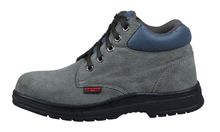
Puncture resistance
The test machine is equipped with a pressure plate on which the test nail is mounted. The test nail is a tip with a pointed tip, and the hardness of the nail head should be greater than 60HRC. The sole sample is placed on the chassis of the testing machine in such a position that the test nail can be pierced through the outsole, and the test nail pierces the sole at a speed of 10 mm/min ± 3 mm/min until the penetration is completed. The greatest strength. Four points are selected on each sole for testing (at least one of which is at the heel), each point is not less than 30 mm apart, and the distance from the insole edge is greater than 10 mm. The bottom of the anti-slip block should be pierced between the blocks. Two of the four points should be tested within 10-15 mm of the edge line of the bottom of the plant. If humidity affects the results, the sole should be immersed in deionized water at 20 °C ± 2 °C for 16 ± 1 h before testing.
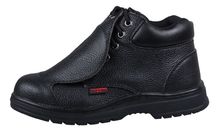
Antistatic performance
After the shoe sample is adjusted in a dry and wet atmosphere, the clean steel ball is filled into the shoe and placed on the metal probe device, and the first two probes and the third probe are measured using a prescribed resistance tester. Resistance between. Under normal circumstances, conductive shoes require resistance should not be greater than l00K ohms; anti-static shoes require resistance should be between 100K ohms and 100M ohms.
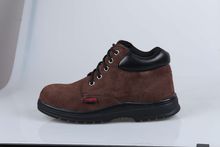
Thermal insulation performance
Using the shoe as a sample, the thermocouple was placed at the center of the insole connection area, and the steel ball was filled into the shoe. Adjust the temperature of the sand bath to 150 ° C ± 5 ° C, put the shoe on it, make the sand contact the outsole of the shoe, use the temperature test device connected with the thermocouple, determine the temperature of the insole and the corresponding time , gives the temperature increase curve. The temperature increased from 30 minutes after the sample was placed on the sand bath was calculated. Generally insulated shoes require an increase in temperature of the inner bottom surface of less than 22 °C.
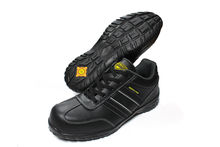
Heel performance
The test instrument has a maximum compression load of 6000 N and is equipped with a device for recording load/deformation characteristics. The shoe with the heel is placed on a steel plate, and the test punch is placed on the inner side of the heel portion against the insole. The load was applied at a speed of 10 mm/min ± 3 mm/min. The load/compression curve is plotted and the absorbed energy E is calculated, expressed in joules.
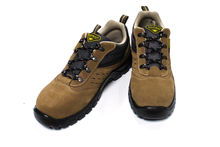
Anti-slip performance
The standard stipulates the anti-skid coefficient of the test sole, but the design and specifications of the anti-skid block are specified, such as the thickness of the sole, the height of the non-slip block, and the distance from the edge of the sole.
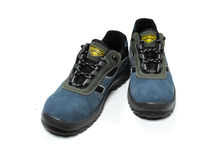
Acid and alkali resistance
Suitable for electroplating, pickling, electrolysis, liquidation, chemical operators, etc. Note: Acid and alkali resistant shoes can only be used in acid and alkali working places with low concentration; avoid contact with high temperature, sharp damage to the upper or sole leakage; apply water to wash the acid and alkali liquid on the shoes after wearing, then Allow to dry and avoid direct sunlight or drying. 1. Hardness change (IRHD) Sulfuric acid, hydrochloric acid, and sodium hydroxide △H=±10. (The test result is +6, +4, +3, in line with the standard) 2. The quality change (%) sulfuric acid, hydrochloric acid, sodium hydroxide △ m = ± 2 (test results are +0.6, +0.5, +0.6, in line with the standard ). 3. Tensile properties (%) The tensile strength change of sulfuric acid, hydrochloric acid and sodium hydroxide is reduced by less than 15 (test results are -8, -6, -4, in line with the standard). 4. Elongation at break (%) The change of sulfuric acid, hydrochloric acid and sodium hydroxide does not exceed ±20 (test results are -8, -5, -4, in line with the standard).
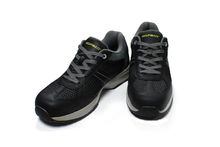
Information from: safety shoes, protective shoes, safety shoes manufacturers, protective footwear manufacturers, Dongguan Shengli Safety Shoes Co., Ltd., website: www.dgttl.com)




